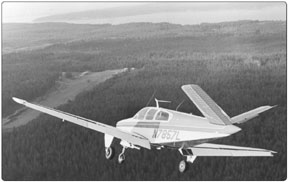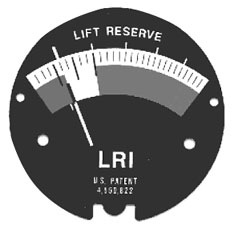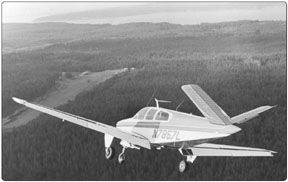
By Thomas P. Oneto
Many pilots live in abject fear of performing on-demand slow-flight maneuvers, either in training or for proficiency. This is despite the fact that each flight-if its flown properly, anyway-involves a period of slow flying during takeoff and landing. What is so important about slow flight? In fact, why should we be interested in it at all? Good questions, and both are deserving of answers.
Slow flight lies in that regime between normal flight with controllability and stalled flight without controllability. It can be thought of as that no-mans land between flying and stalling. So why isnt there more emphasis on slow flight? Another good question, but this time the answer is going to take some explaining.
What Is Slow Flight?
Simply speaking, slow flight is that narrow airspeed range between normal flight and wing stall. We could throw out some definition like the area between 1.2 Vso and aerodynamic stall, but the definition of slow flight is less important than a full and complete understanding of what is happening in the just-above-stall flight regime. This is the area in which control effectiveness diminishes with reduced airspeed, and that greater control displacement-with its associated increase in drag-is required to produce the desired change in the aircrafts attitude. All this creates an unusual and different relationship between thrust and airspeed.
Understanding all of this involves an area of aerodynamics unpopular with many pilots because of the misconceptions they may have. This is the difference between the area of normal command authority and the less-well-understood slow-flight regime located in the area of reverse command.
Misconceptions associated with slow flight include belief that the airplane reacts opposite to normal control application, that thrust and drag curves reverse themselves, and that application of power causes the airplane to go slower. These and other facts are usually the result of kitchen-table aerodynamics. In this environment the group accepts the reasoning as logical, and the next thing you know it is being stated as fact. Unfortunately, physical laws are sometimes contrary to logical thinking-which is how misconceptions are born.
Why Practice It?
Slow flight proficiency sensitizes the pilots recognition and ability to react to slow flight by maintaining flying speed and controllability while not allowing a stall to develop. Of course, there are times when we want to stall the airplane, so the ability to sense the impending stall is crucial for recognizing its onset. Developing this ability is necessary for each airplane model we qualify in. Since each model has different slow flight and stall characteristics, practice will condition us to recognize, react to the indications of and avoid a stall.
However, flying slowly is not limited to intentional practice. Instead, it helps us develop skills necessary to accommodate normal flight operations, like takeoffs and landings. Further, we must not depend on stall-warning devices to prevent us from recognizing the slow-flight regime and an approaching stall.
There are two reasons for this. One should be obvious: Equipment can fail at the most inconvenient time. The other reason is the limitations of the stall-warning device itself. See the sidebar at right for more details on the typical stall warning devices found in light airplanes.
The Phenomenon
Aircraft operation in the areas of normal and reverse command can be explained easily. Simply put, when in the area of normal command, an increase in airspeed in level flight requires an increase in thrust because of the increase in parasitic drag. In the area of reverse command, a decrease in airspeed in level flight requires an increase in thrust because of the increased induced drag. Additionally, since we are operating at high power settings with low airspeeds, the normal corrections for P factor and torque apply.
Recalling the four forces of flight, we know that in level flight at a constant airspeed thrust equals drag. So, regardless of how the drag is developed, to maintain level flight thrust must equal drag. At a constant weight, altitude and configuration, maintaining total lift is necessary because if total lift is less than the aircrafts weight, we descend.Conversely, if total lift is greater than weight, the airplane climbs. To maintain the same total lift, a balancing act between the coefficient of lift and the aircrafts velocity must be made to produce the lift required to support the airplane. But you know all that.
This balancing act is really quite simple. A decrease in angle of attack, with its associated reduction in lift, must be compensated for by an increase in velocity. But the opposite is also true: A decrease in velocity must be accommodated by an increase in lift to maintain the same total lift. However, maintaining this balance can become quite complicated. Since we are at a reduced margin above stall, anything that changes weight (maneuvering flight), lift coefficient (angle of attack, flaps) or velocity (thrust) will reduce the margin above stall. This requires a delicate touch and rapid-but-smooth-corrections to avoid stalling, if thats what we want to do.

These effects can be illustrated by the corrective actions necessary to accommodate changes in performance. An example would be a change from straight-and-level flight to a turn in slow flight. To maintain level flight and constant airspeed during the turn we would have to increase thrust. While this may help us maintain level flight, we must remind ourselves that we have decreased our margin above stall because of the bank and resulting load factor. We will have to add thrust to increase our airspeed and maintain our margin above stall.
If we want to climb at our low airspeed, we need to add thrust in excess of that required for level flight. The amount of excess thrust and power determines the resulting angle and rate of climb.
One word of caution on leveling off after a slow-flight climb-do not depend on momentum and reduce power to the level-flight setting prior to attaining the new altitude. This will reduce excess thrust to zero and, with gravity acting against the climb, its likely the airplane will level off at an altitude close to that at which the power reduction was made. Reducing power as you arrive at the desired altitude is usually the best procedure.
In a descent at a constant slow-flight airspeed, we would merely reduce our power or thrust slightly to initiate the descent. When compared to our slow-flight climb, the power change required for an equivalent descent rate is much less. This time, gravity works with us and adds to the thrust deficiency requiring less power in a descent.
Leveling off from a slow-flight descent requires leading with a thrust increase to overcome momentum. The general rule of thumb is to lead the level-off with power at an altitude 10 percent of the descent rate above where we want to be. Usually, this also requires a slight increase in elevator backpressure to stop an airspeed increase with power application and to re-establish the correct slow-flight pitch attitude.
Normal Vs. Reversed
As previously mentioned, the slow-flight regime is in the area of reversed command when considering a thrust/drag performance graph, like the one on the next page. The graph itself represents the relationship between thrust, drag, and airspeed on the performance of an airplane at a constant weight and altitude.
There is a point (M) at the bottom of the graph where the minimum amount of thrust is required to maintain altitude, and the associated airspeed at which this occurs. To the right of this point is the area of normal command.In this area, an increase in thrust is required to overcome an increase in parasitic and total drag to produce an increase in airspeed in level flight.
To the left of that point is the area of reversed command. In this area, an increase in thrust is required to overcome an increase in induced and total drag to enable the airplane to maintain level flight at a lower airspeed. Hence the term reversed because in the area of normal command an increase in thrust is required to accommodate an increase in airspeed, while in the area of reversed command an increase in thrust is required to accommodate a decrease in airspeed.
You may also recognize that the same thrust setting produces two airspeeds: one in the area of normal command, and another in the area of reversed command. This is as it should be and, perhaps without recognizing it, you regularly have been operating in this area since your earliest days as a primary student. When you were introduced to slow flight, you knew that to maintain 45 knots you had to apply 1800 rpm. Then, when you returned to the pattern and slowed to 70 knots, you automatically set your power at 1800 rpm. Same power setting, two airspeeds. Chances are you have been doing this in every airplane you checked out in since your student days without realizing it.
There is one other point to make about this graph. Because of the steeper slope of the performance graph in the area of reversed command, you will notice that a 10-knot decrease in airspeed requires a greater increase in thrust than a 10-knot increase in airspeed in the area of normal command.
The real-world application of this characteristic means that greater amounts of thrust are required when operating in the area of reversed command. Further, this additional thrust requirement is magnified when the airplane is maneuvering.
For example, if youve ever done slow-flight work in a low-powered airplane like a Cessna 150/152, youll recall that large power applications can be required to maintain altitude when making turns in the slow-flight configuration.
Understanding the terms area of normal command and area of reversed command is key to understanding slow flight. The airplanes behavior characteristics in both areas should also be understood. Most importantly, understanding these characteristics provides the knowledge, techniques and procedures required to obtain desired performance and safety when operating in the slow-flight regime.
To accept fully what you have learned, head for the practice area and compare these concepts of slow flight to the actual performance of the airplane. Most interesting will be noting the power settings in the various configurations, and then comparing them to the power settings in those same configurations while in the airport pattern. You might be surprised.
Have fun!
Also With This Article
“Delayed Warning”
“Whats Your Angle?”
“Behind The Power Curve”
-Tom Oneto is a freelance writer/instructor living in Maryland who holds ATP and CFI-A/Instrument certificates.




